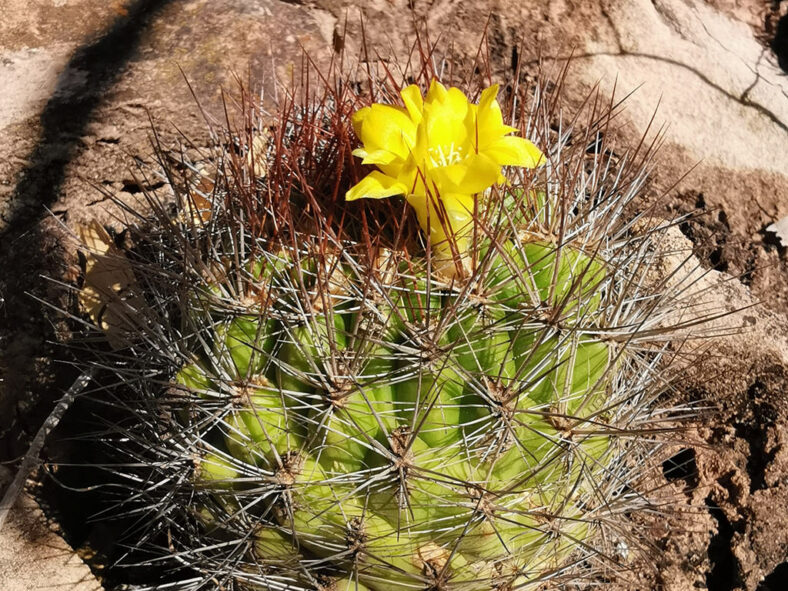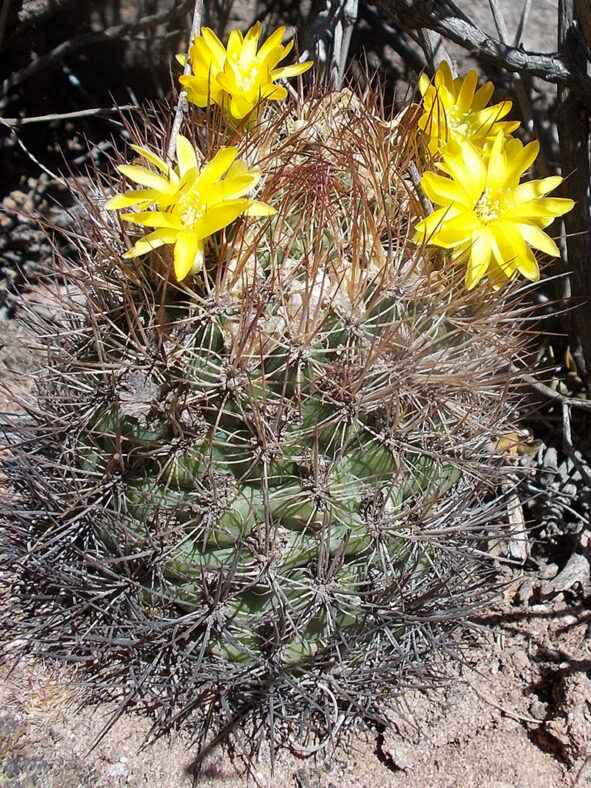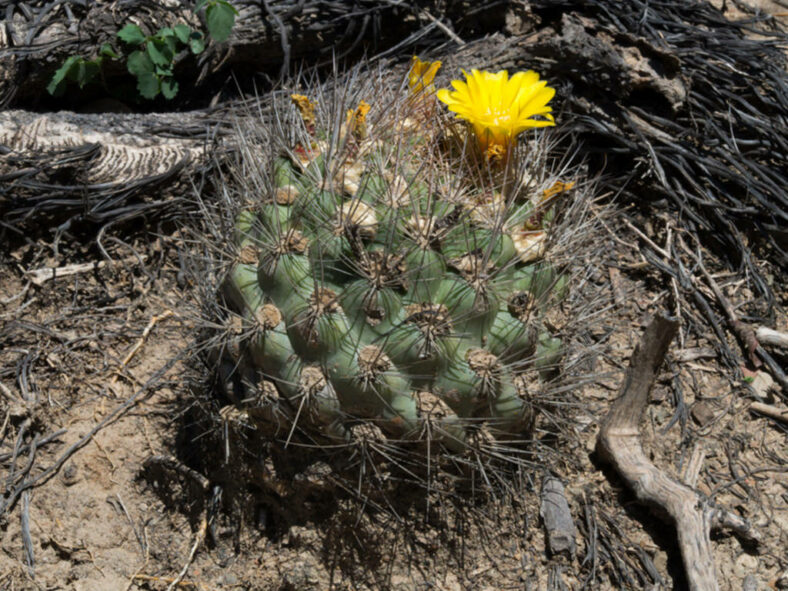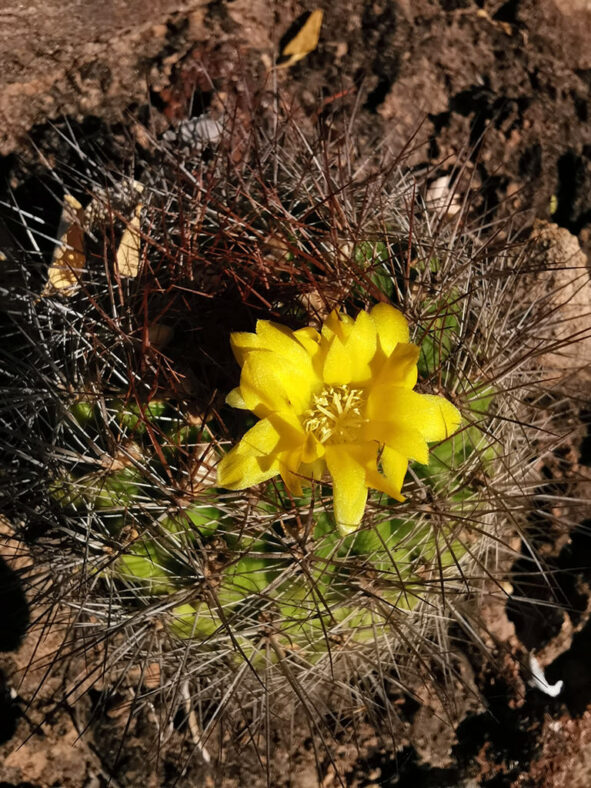Rebutia neocumingii is a recipient of the prestigious Award of Garden Merit of the UK's Royal Horticultural Society.
Scientific Name
Rebutia neocumingii (Backeb.) D.R.Hunt
Common Name(s)
Cuming's Crown Cactus
Synonym(s)
Echinocactus cumingii, Gymnocalycium neocumingii, Gymnorebutia neocumingii, Rebutia neocumingii subsp. neocumingii, Sulcorebutia neocumingii, Weingartia neocumingii
Scientific Classification
Family: Cactaceae
Subfamily: Cactoideae
Tribe: Trichocereeae
Genus: Rebutia
Etymology
The specific epithet "neocumingii" (pronounced nee-oh-kum-ING-ee-eye) honors Hugh Cuming (1791-1865), an English collector who was interested in natural history, particularly in conchology and botany.
Origin
Rebutia neocumingii is native to Bolivia and Peru. It occurs at elevations that range from 4,590 to 9,840 feet (1.400 to 3.000 m)
Description
Rebutia neocumingii, also known as Weingartia neocumingii, is a small cactus with a spherical to short cylindrical, usually solitary stem with 16 to 18 tuberculate, often spiraled ribs. The stem can reach a height of 8 inches (20 cm) and a diameter of 4 inches (10 cm). This species is quite variable in spination, with yellowish spines that have brown tips and can measure up to 0.8 inches (2 cm) long. Each areole can bear 2 to 8 central and 5 to 24 radial spines.
In early summer, Rebutia neocumingii produces yellow to orange flowers that remain open for five or six days. The flowers can reach a length of 0.8 inches (2 cm) and a diameter of 1 inch (2.5 cm). They mainly appear near the tip of the stem.

How to Grow and Care for Rebutia neocumingii
Light: While it grows well in direct sunlight, Rebutia neocumingii prefers partial shade during midday in the summer. A sunny window would be ideal if you are growing the cactus indoors.
Soil: Good drainage is essential for a healthy plant. You can use a commercial soil mix designed from cacti or make your own.
Temperature: As a mountain plant, this cactus does not appreciate high temperatures and grows best in USDA Plant Hardiness Zones 9b to 11b, with average minimum winter temperatures ranging from 25 to 50 °F (-3.9 to 10 °C).
Watering: During the growing season, water Rebutia neocumingii frequently, but allow the soil to dry out completely before watering again. However, stop watering when it goes dormant in the winter.
Fertilizing: Although unnecessary, using a low-balanced soluble fertilizer diluted to half the recommended strength can help your cactus thrive. However, suspend the feeding in winter.
Repotting: It is recommended to repot a young plant each year in early spring. On the other hand, a mature plant only needs to be repotted when it outgrows its pot. Late winter or early spring is the best time for repotting.
Propagation: You can propagate Rebutia neocumingii by offsets or seeds. Remove the offsets when the plant is actively growing and sow the seeds in the spring.
See more at How to Grow and Care for Rebutia.
Toxicity of Rebutia neocumingii
Rebutia neocumingii has no toxic effects reported.
Links
- Back to genus Rebutia
- Succupedia: Browse succulents by Scientific Name, Common Name, Genus, Family, USDA Hardiness Zone, Origin, or cacti by Genus
Photo Gallery
Click on a photo to see a larger version.


